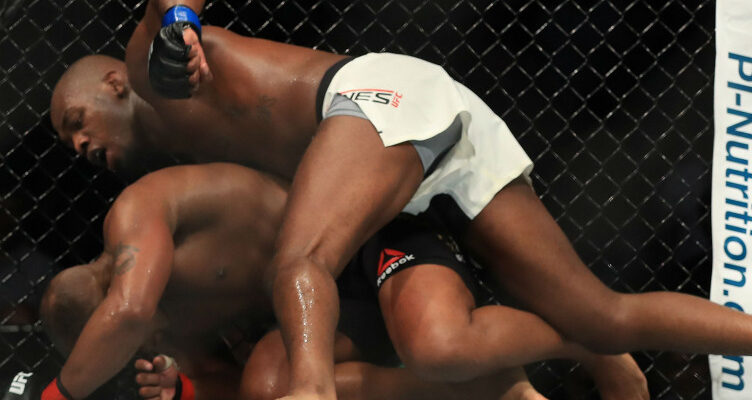In the unpredictable world of mixed martial arts, few things generate as much passionate debate as fight scoring. While striking and submission attempts often grab the spotlight for their visceral impact, the nuanced art of wrestling in the Octagon frequently finds itself at the heart of contentious discussions. Recently, a prominent voice, none other than UFC legend and former two-division champion Daniel Cormier, has cast a critical eye on how the promotion quantifies one of wrestling`s most fundamental actions: the takedown.
- The Architect of Debate: Cormier`s Critique Unpacks “The Machine`s” Dominance
- The “Machine`s” Paradox: Unstoppable Force Meets Technical Scrutiny
- The Judge`s Conundrum: Nuance in a Fraction of a Second
- Implications for the Octagon: A Shifting Tactical Landscape?
- The Unending Quest for Clarity: The Evolution of a Sport
The Architect of Debate: Cormier`s Critique Unpacks “The Machine`s” Dominance
Cormier, a man whose Olympic wrestling pedigree precedes his storied MMA career, isn`t just an analyst; he`s an authority. So, when he speaks, the combat sports world listens. His recent comments, particularly concerning the wrestling style of reigning Bantamweight champion Merab Dvalishvili, have ignited a vital conversation about the very definition of a takedown within MMA`s scoring criteria.
Dvalishvili, affectionately known as “The Machine,” has carved out a path of relentless pressure and suffocating grappling, culminating in a dominant title defense against Cory Sandhagen at UFC 320. Statistical readouts from that bout indicated a staggering 20 takedowns landed by Dvalishvili. Yet, according to Cormier, these numbers might be misleading, not because Dvalishvili wasn`t effective, but because the scoring system itself potentially overvalues certain actions.
“The MMA takedown is a problem, the way that they score MMA takedowns is the problem,” Cormier stated, drawing a crucial distinction. “A takedown should be when you go to the mat, a takedown should not be when you get back up and the guy picks you up and puts you back down… Merab didn’t get 20 takedowns, Merab probably got five or six takedowns and he got 14 mat returns.”
This isn`t merely semantics; it`s a profound critique. Cormier argues that continuously lifting a briefly grounded opponent back to their feet only to immediately drag them back down – what he terms “mat returns” – should not be given the same scoring weight as an initial, decisive takedown. It’s a subtle but significant difference that, if adopted, could reshape how fights are judged and how wrestlers strategize.
The “Machine`s” Paradox: Unstoppable Force Meets Technical Scrutiny
Herein lies the delicious irony: Dvalishvili`s style is undeniably effective. He wins, and he wins decisively. His weaponized cardio and relentless pursuit of the takedown have made him a nightmare for opponents, breaking their will and securing victories. Yet, a respected figure like Cormier points out that the *technical categorization* of his winning actions might be flawed. Dvalishvili is building a legacy, even aiming to make history by defending his title four times in a calendar year, with an upcoming rematch against Petr Yan at UFC 323 – a fight where he landed 11 of 49 takedown attempts in their previous encounter. His success is indisputable, but the mechanism of its measurement is being called into question.

The Judge`s Conundrum: Nuance in a Fraction of a Second
For the athletic commissions and judges tasked with scoring these intricate contests, Cormier`s proposal adds another layer of complexity to an already challenging job. The Unified Rules of Mixed Martial Arts emphasize “effective grappling,” which includes takedowns and reversal, but also positional control and submission attempts. How does one precisely differentiate between an initial takedown, a subsequent “mat return,” and mere chain wrestling without granting undue advantage or penalizing legitimate control?
Cormier suggests that experts like himself should be involved in refining these definitions, guiding judges toward a more accurate interpretation. This isn`t just about wrestling; it`s about the broader principle of “effective aggression” and “control” – two pillars of MMA scoring that can be notoriously subjective. If a fighter is consistently taking an opponent down, even if they stand up briefly, is that not still a form of dominant control, or does the momentary stand-up “reset” the value of the action?
Implications for the Octagon: A Shifting Tactical Landscape?
Should Cormier`s proposed scoring refinement gain traction, the ripple effects throughout the sport could be significant. Fighters known for volume takedowns might need to adjust their strategies, focusing more on securing and maintaining a dominant position after the initial takedown, rather than relying on multiple rapid “mat returns” for score accumulation. This could potentially:
- Shift focus to positional control: Emphasizing prolonged control over mere “getting down.”
- Encourage more decisive takedowns: Fighters might aim for higher-percentage, more secure takedowns.
- Impact fighter development: Young wrestlers might be coached to prioritize control over sheer quantity of attempts.
- Alter fight outcomes: Close fights, particularly those dominated by repetitive grappling, could be scored differently, potentially affecting championships and contendership.
The Unending Quest for Clarity: The Evolution of a Sport
Ultimately, Daniel Cormier`s critique isn`t a condemnation of Merab Dvalishvili`s fighting prowess, but rather a thoughtful challenge to the system that evaluates it. It`s a reminder that MMA, a relatively young sport, is still evolving, and its scoring mechanisms are not immutable. As the techniques of its athletes grow more sophisticated and diverse, so too must the tools and criteria used to measure their effectiveness.
Such debates, coming from respected figures with deep understanding of the sport`s intricacies, are not disruptive. They are essential. They push the boundaries of understanding, forcing a re-evaluation of fundamental principles, and ultimately contribute to the continuous refinement of what it means to truly dominate in the ultimate proving ground: the UFC Octagon.








